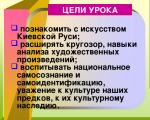30 minute break. Types of breaks that are included in working hours and paid. Women with babies
Having considered the issue, we came to the following conclusion:
Providing an employee with a break for rest and food lasting 30 minutes or the opportunity to eat during working hours does not increase the working hours established in the organization. The break time for rest and meals does not need to be reflected in the time sheet.
Rationale for the conclusion:
According to part one of the Labor Code of the Russian Federation, during the working day (shift), the employee must be given a break for rest and food lasting no more than two hours and no less than 30 minutes, which is not included in working hours. The time for providing a break and its specific duration are established by internal labor regulations or by agreement between the employee and the employer (part two of the Labor Code of the Russian Federation). Consequently, providing an employee with a lunch break of 30 minutes does not entail an increase in the established working hours, although in fact the employee will leave half an hour later.
In accordance with part four of the Labor Code of the Russian Federation, the employer is obliged to keep records of the time actually worked by each employee. The form of the working time sheet (form N 0504421) was approved by the Ministry of Finance of the Russian Federation dated December 15, 2010 N 173n. The same legal act approved guidelines for the use of forms of primary accounting documents (hereinafter referred to as the Guidelines).
Thus, according to the Directions, only cases of deviations from the normal use of working time established by the internal labor regulations are recorded in the working time sheet. In other words, the days of attendance at work and the established number of working hours worked by the employee per working day are not recorded. And since, as mentioned above, a break for rest and food does not count as working time, there is no need to reflect this time in any way on the timesheet.
Please note that in accordance with part three of the Labor Code of the Russian Federation, at jobs where, due to production (work) conditions, providing a break for rest and food is impossible, the employer is obliged to provide the employee with the opportunity to rest and eat food during working hours. The list of such work, as well as places for rest and meals, are established by the internal labor regulations. Accordingly, internal labor regulations may provide for eating during working hours. In this case, the time for eating will coincide with working hours, but this cannot serve as a basis for increasing the established working hours.
Prepared answer:
Expert of the Legal Consulting Service GARANT
Soloviev Oleg
Response quality control:
Reviewer of the Legal Consulting Service GARANT
Kudryashov Maxim
The material was prepared on the basis of individual written consultation provided as part of the Legal Consulting service.
Information about which breaks are included in working hours and paid is contained in the Labor Code and other regulations. Managers are required to adhere to established rules for providing breaks to their staff. In addition, they bear a certain responsibility, so they cannot reduce the duration of the break or prohibit it altogether.
Every employer knows that he is obliged to provide his employees with a certain number of breaks during the working day. When it comes to a break, a working person immediately thinks of lunch or free time for smoking breaks. But according to the labor legislation of the Russian Federation, there are much more of them.
They are conventionally divided into several groups:
- general;
- special;
- mandatory;
- recommended;
- paid;
- unpaid.
This classification makes it possible to determine which rest periods can be used by all workers, and which only by representatives of a narrow range of professions. Common ones include lunch breaks and other types of stopping work for personal needs. Special breaks are used in various industries where employees require additional free time, as well as for certain categories of employees (employees with small children, etc.).
If we talk about mandatory and recommended breaks, the former are the responsibility of management, and the latter are provided as necessary and on the basis of internal local regulations. Most periods of rest during the day must be paid, but there are some that are not.
All information about breaks, including their duration, is determined by a large number of documents. These are collective and labor agreements, as well as relevant internal regulations.
Unpaid
Not all employees know whether lunch breaks are included in their pay. Oddly enough, a break for rest and food during the working day is not subject to mandatory payment. The employee can spend this time at his own discretion. That is, not only to have lunch or rest, but also to leave work for personal needs.
But there are also exceptions. For example, teachers do not stop working, leaving for personal matters during their vacation. Their lunch time coincides with the students’ lunch, as does its duration. Therefore, they have a paid break for rest and food.
The lunch break has its own specifics depending on the type of activity of the employee. According to the Labor Code of the Russian Federation, lunch can last from half an hour to two hours and in most cases is never included in the work process. The boss decides what duration to set, minimum or maximum. For example, drivers, as well as air traffic controllers, have two lunch breaks during an 8-hour working day. In addition, the dispatcher is also entitled to one additional hour of rest.
People who work less than an 8-hour day also need time to rest and recuperate. Part-time workers and those who work part-time can count on a minimum lunch period. It rarely lasts half an hour. The employer also has the right to provide such subordinates with work during that period of the working day when there is no need to go to lunch.
Paid
There are a number of breaks that management must include in working hours and then pay for. There are few of them, but they are all regulated by the Labor Code of the Russian Federation and other regulations.
Feeding
This type of vacation should be provided to young mothers with children under 1.5 years old. The break interval is 30 minutes of rest every 3 hours. If the employee has several children of this age, then its duration should be at least 1 hour.
Reference: the boss has the right, at the request of a subordinate, to summarize these breaks and move them to the beginning, middle or end of the shift. Thus, a woman's working day is significantly reduced.
Heating
This termination of the work process is classified as special, since it is used only for special types of work. They can count on him:
- persons carrying out labor activities on the street or in an unheated room;
- subordinates working on loading and unloading operations.
According to the rules specified in these recommendations, the room temperature should be between 21–25°C. When establishing the frequency and duration of such breaks, employers use special guidelines. Much depends on the number of working days and weekends.
If personnel are engaged in the construction of underground structures and use vibrating tools, then the rest time is 15 minutes for every 40 minutes of work. In addition, the air temperature in the heating room must be at least 40°C. Such interruption of the work process is required by law to be paid.
Technical breaks
The employer is obliged to establish special breaks during working hours according to the Labor Code. Their conditions depend on the nature of the work performed by the staff. If a subordinate working at a computer has an 8-hour working day, then technical breaks should be as follows:
- Load level up to 20 thousand characters. There are two breaks of 15 minutes, 2 hours after the start of work and after lunch.
- Load level up to 40 thousand characters. There are also two 15-minute rest periods, but management may instead set a 10-minute break every hour.
- Load level up to 60 thousand characters. An employee may take two 20-minute breaks two hours after the start of the shift and the end of lunch. Their employer can replace them with breaks of 15 minutes every 1 hour.
With a 12-hour working day, the manager must set breaks in the first 8 hours of work, which are used when the employee has an 8-hour working day. For the next 4 hours, the break time should be at least 15 minutes every hour.
Other breaks
There are a number of professions that provide additional time for rest. All of them are contained in various regulations. For example, the Regulations on the work and rest schedule of drivers contain the following types of breaks:
- Special breaks for drivers to rest while driving.
- Downtime during loading and unloading, as well as boarding and disembarking people.
- A period of time when a driver is in a vehicle but is being driven by another driver.
As for other specialists, wages include:
- For employees involved in fire protection, the employer must provide at least 10 minutes of rest every hour.
- For workers whose responsibilities include organizing freight transportation using special protection, hourly rest must be at least 15 minutes.
Labor legislation provides for time when a person does not work, but he is still paid. How much time can an employee spend on additional duties, and what cases will not be considered absenteeism? In this case, we are talking about the employee performing various public duties. This could include jury duty, military service, etc.
Many employers do not know whether the wages include the time that a specialist spends on the preparatory process for work. This includes changing into overalls, turning on the equipment, etc. In addition, it is not clear how much time should be given to a subordinate to perform these actions and how legal it is not to pay for it.
It is interesting that the norms of legislative acts (including the Labor Code) do not classify this time as either work or rest. Therefore, in practice, all these actions of employees are attributed specifically to working time. At the same time, employers are guided by whether these actions are an integral part of the work process and whether the employee can start work without them. If not, then this time must be paid for.
Knowing which breaks are included by the employer in working hours and paid for, it is easier for a subordinate to defend his rights. But he is also obliged to fulfill his functions and comply with internal regulations. And if an employee uses work time for his own personal purposes, he may be subject to disciplinary action or dismissal.
Attention! Due to recent changes in legislation, the legal information in this article may be out of date!
Our lawyer can advise you free of charge - write your question in the form below:
To stay productive.
Bookmarks
Translation of the publication “Ideonomics”.
Science has proven that breaks are beneficial. They refresh your concentration and help you get more done. However, there is not always enough discipline to satisfy them. And if you don't feel the benefits of breaks, then you may be using them incorrectly, says Carson Tate, author of Work Made Simple.
“You need to take a complete break from work,” she says. - No need to have a snack and check email at the same time. You need to mentally disconnect from work.”
When used correctly, a break is like hitting the reset button. “When we come back from a break, we can be more creative, innovative and driven,” says Tate. - We don't tend to be distracted by, for example, looking at Facebook or email. We are more passionate and immersed in our work.”
So what should you do in your free time? Here are some ideas to help you make the most of your moments of respite.
From 5 to 15 minutes
Any movement will bring positive results, such as increased creativity and more concrete ideas, says Tate. “Walk up and down the stairs, go outside and walk around the block, do push-ups or jumping jacks,” she says. - It doesn’t matter what you do, the main thing is to get the blood flowing. A five-minute break can be more effective than a 30-minute break if you get some exercise during that time.”
Sometimes the most productive thing you can do is do nothing, says Maura Thomas, author of Working Without Walls.
“Or it could be a mindfulness practice, meditation, or deep breathing,” she says. “You can do it all in two minutes or 20. Small breaks like this add energy to your mind and can lead to moments of creative insight.”
You can also look out the window or daydream, but only if you can admire something green. A study published in the Harvard Business Review found that “green microbreaks” improve attention levels and productivity.
30 minutes
If you have half an hour, take a walk, suggests Laura Stack, author of The Cure for Exhaustion. "Sitting at a desk for hours can reduce your energy levels," she says. - If it is raining or very cold, walk up and down the stairs several times. Use what is around. Take an energetic walk across the floor, across the parking lot, or around the building. You can even use the fire escape as a training device.”
Setting up your workspace can be a nice break, says Thomas. “You can say what you want about clutter and creativity, but in my work I've seen that clutter equals stress,” she says. “Clutter sends a message to you and those around you that you are overwhelmed, out of control, and that there may be things buried in the clutter that need your attention.”
Taking breaks can also help by connecting with another person, Tate says. “Call your friend, loved one or spouse,” she says. - Get up and talk to your colleague, but not about work. Chat about the weekend, for example.”
60 minutes
“If you have an hour of free time, leave your desk. Go out to lunch or have a cup of coffee with a friend, colleague or mentor, says Thomas. “Strengthening work connections is good for your career, and connecting with friends and family reduces stress and activates your brain.”
Use this time to unload your brain, transfer some thoughts from your head to paper, where they can be considered more objectively. If you have a big project looming, get your thoughts down on paper, says productivity coach Deb Lee. "It's a quick and easy task that allows you to be better prepared when it comes time to sit down and tackle the project," she says.
Or look away from your screens and read. According to a study conducted at the University of Sussex, reading a novel can relieve stress more than listening to music, going for a walk or drinking a cup of tea. Reading lowers your heart rate and eases muscle tension, helping you relax and avoid anxiety.
Articles on the topic
- Coach Erik Larssen on the philosophy of proper rest.
- Four questions to think about while on vacation.
- Seven tricks that make people happier at work.
Eating several times a day at regular intervals is an essential physiological need for humans. This necessitates the need to provide the employee with a break from work during lunch. The obligation to provide appropriate time is legislated in the Labor Code of the Russian Federation.
Is lunch included during working hours
By agreement of the parties, the employee may be given specific duration and frequency of lunch time, separate from others. In this case, the corresponding condition must be included in the employment contract or an additional agreement to it.
Lunch break for a part-time (for example, 4-hour) working day
Working conditions for part-time work are regulated by Article 93 of the Labor Code of the Russian Federation. This rule states: an employee who works under such conditions cannot be limited in labor rights.
Therefore, if an employee has a part-time working day (it doesn’t matter what the duration is - four hours or two), then:
- firstly, the employee must be given a lunch break according to the Labor Code of the Russian Federation;
- secondly, the duration of such a break cannot be less than thirty minutes.
Lunch time for a 12 hour (or more) work day
For cases where working hours exceed the normal (i.e. eight-hour) working day, labor legislation does not provide for the provision of additional lunch time. In this case, the employer has the right to resolve this issue independently or in agreement with the employee.
For example, if an employee has a 12-hour working day, in accordance with the internal labor regulations, he can be provided with two lunch breaks of 45 minutes each during the working day.
Is lunch break paid?
Payment for lunch breaks is not provided for by labor legislation. As a general rule, the time of such a break is not working time and is used by the employee at his own discretion.




